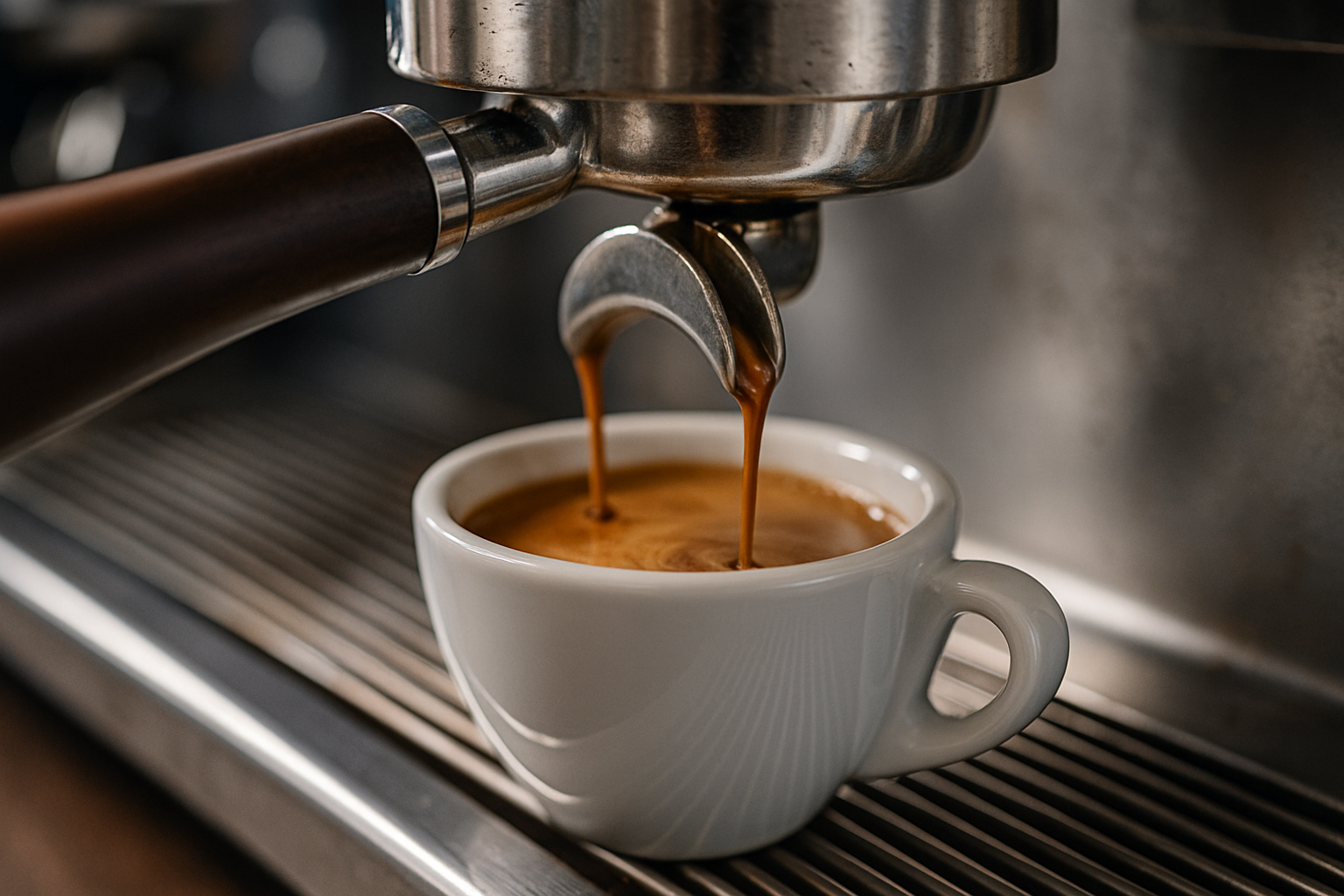Espresso extraction time is one of the most critical factors determining your shot’s flavor, body, and aroma. By dialing in the right extraction time, you can transform an average espresso into a sensory masterpiece.
This guide will walk you through the fundamentals of extraction time, the variables that influence it, and practical steps to adjust your shot for consistent perfection.
Why Extraction Time Matters
Extraction time refers to how long water stays in contact with coffee grounds under pressure. It affects:
- Flavor balance: Too short a time often yields sour, underdeveloped notes; too long may lead to bitter or astringent flavors.
- Body and mouthfeel: Balanced extraction creates a syrupy, full-bodied texture.
- Aroma and crema quality: Proper timing helps preserve volatile compounds and stabilize crema.
Understanding extraction time empowers you to highlight your beans’ best characteristics and minimize defects.
Key Variables Influencing Extraction Time
Several factors interact to determine your espresso’s extraction time:
Grind Size
Finer grinds increase resistance to water flow, lengthening extraction; coarser grinds do the opposite. Dialing in grind size is the first and most sensitive adjustment.
Dose (Coffee Weight)
Higher doses can compact the puck and slow down flow, extending extraction. Lower doses yield faster shots but may compromise body.
Yield (Brew Ratio)
Yield is the weight of espresso in your cup relative to the dose. A standard 1:2 ratio (e.g., 18 g in → 36 g out) guides extraction time targets.
Water Temperature
Ideal temperatures range from 90 °C to 96 °C. Higher temperatures speed extraction and accentuate sweetness; lower temperatures can highlight acidity.
Pressure and Machine Quality
Most machines operate at 9 bar. Variations in real pressure and stability can subtly influence extraction time and uniformity.
Tamping Technique
Uneven or too-light tamping can cause channeling, leading to erratic flow and inconsistent extraction times.
Step-by-Step Guide to Adjusting Extraction Time
- Start with a Baseline Recipe
- Use 18 g of freshly ground coffee.
- Set a target yield of 36 g.
- Aim for 25–30 seconds of extraction at 9 bar and 94 °C.
- Pull Your First Shot
- Record the actual extraction time, yield, and taste notes (sour, sweet, bitter).
- Analyze and Tweak
- If extraction is too fast (<25 s) and tastes sour/sharp → grind finer by 1–2 clicks or reduce dose slightly.
- If extraction is too slow (>30 s) and tastes bitter or hollow → grind coarser or light en up tamping pressure.
- Keep Other Variables Constant
- Only change one variable at a time (e.g., grind size).
- Maintain consistent dose, yield, temperature, and pressure.
- Repeat and Record
- Pull another shot after each adjustment.
- Keep a log of grind setting, time, yield, taste, and any machine parameters.
- Taste Blind
- Sample shots without peeking at the numbers to judge improvements by taste alone.
Common Extraction Time Targets for Espresso Styles
- Ristretto (1:1 ratio): 18 g → 18 g in 18–22 s
Intense, syrupy, high sweetness; ideal for tasting concentrated aromatics. - Normale (1:2 ratio): 18 g → 36 g in 25–30 s
Balanced body, sweetness, and acidity; the classic espresso profile. - Lungo (1:3 ratio): 18 g → 54 g in 35–45 s
More volume, milder flavor, emphasizes bitterness and mouthfeel.
Use these as starting points; adjust according to bean origin, roast level, and personal preference.
Troubleshooting Extraction Issues
Underextraction (Fast, Sour Shot):
- Symptoms: Pale crema, thin body, pronounced acidity.
- Fixes:
- Finer grind.
- Increase dose by 1 g.
- Check water temperature (raise by 2 °C).
Overextraction (Slow, Bitter Shot):
- Symptoms: Dark crema, oily drips, harsh bitterness.
- Fixes:
- Coarser grind.
- Reduce dose or yield.
- Lighten tamp.
Channeling and Uneven Flow:
- Symptoms: Shot pours unevenly through puck, gurgles, or spurts.
- Fixes:
- Distribute grounds evenly before tamp.
- Ensure level tamp at consistent pressure (15–20 kgf).
- Clean group head and shower screen for uniform water spread.
Dialing In for Consistency
Consistency is key to exceptional espresso over time. Build a routine:
- Daily Equipment Maintenance: Backflush, replace gaskets, clean burrs.
- Use Fresh Beans: Ideally within two weeks of roast date.
- Monitor Environmental Factors: Humidity and temperature can affect grind and puck behavior.
- Keep a Journal: Date, time, bean batch, grind setting, shot parameters, and tasting notes.
- Calibrate Regularly: Weekly check against a benchmark extract time and yield.
Advanced Tips for Perfecting Your Shot
- Pre-Infusion: A short, low-pressure soak (2–4 s) helps pack the puck and reduce channeling.
- Flow Profiling: Some machines allow ramping pressure during extraction to fine-tune sweetness and body.
- Water Quality Adjustment: Use a TDS meter to test hardness; add a small pinch of specialty coffee mineral blend if needed.
- Temperature Surfing: If your machine allows, tweak temperature mid-shot to emphasize different flavor phases.
Bringing It All Together
Mastering extraction time is a journey of experimentation and sensory discovery. By understanding how grind size, dose, yield, temperature, and pressure interact, you gain control over each espresso shot.
Establish a consistent workflow—measure, adjust, record, and taste—to steadily improve. Over time, you’ll develop an intuitive sense for crafting the perfect shot, every time you pull a lever or press a button.
Enjoy the process, and let each extraction teach you more about the nuanced world of espresso.

